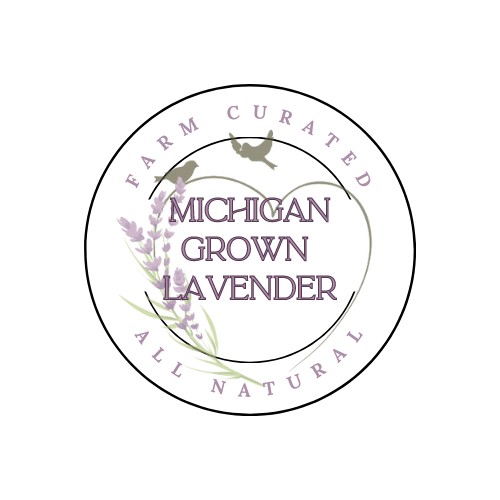Amending clay soil to grow lavender successfully requires a strategic approach to ensure proper drainage and nutrient availability for the plant. When establish, lavender is a drought resistant plant and does not like “wet feet.” Lavender thrives in well-draining soil, such as sandy loam, but can struggle in heavy clay soils that retain too much water.
Adding sand directly to clay soil is not a recommended solution to create well draining soil as it can create a dense mixture akin to “cement,” inhibiting root growth and water penetration. Instead, incorporating organic matter like compost or perlite can help improve the soil structure by breaking up clay particles and enhancing drainage.
6 Soil Amendments to Help Improve Drainage in Clay Soil:
Compost
By incorporating organic compost into heavy clay soil, you can significantly enhance its structure and porosity. This leads to better air circulation within the soil, allowing plant roots to access oxygen more easily.
Furthermore, the addition of organic compost helps in promoting beneficial microbial activity in the soil. These microorganisms play a crucial role in breaking down organic matter and releasing nutrients that are essential for plant growth. Improved aeration also aids in water drainage, preventing waterlogging and creating optimal conditions for root development.
Incorporating organic compost into clay soil not only enhances aeration but also contributes to overall soil health and fertility. It serves as a sustainable way to improve the quality of your garden or agricultural land while promoting eco-friendly practices.
Pea Gravel
By incorporating pea gravel into clay soil, you can enhance its drainage capabilities, reduce compaction, and create pockets of air that promote healthier root growth for plants.
The addition of pea gravel helps to break up the dense structure of clay soil, allowing for better water infiltration and root penetration. This improved aeration also facilitates the exchange of gases in the soil, supporting microbial activity and nutrient uptake by plants.
Limestone
Lavender loves alkaline soils. If your soil is clay and acidic, limestone may help bring the proper balance lavender plants need to thrive. The addition of limestone helps to regulate soil pH levels, ensuring that plants have optimal conditions for nutrient uptake. Balancing the pH level in clay soil through limestone amendment creates a more hospitable environment for a wider range of plants to thrive.
Incorporating limestone into clay soil not only boosts aeration but also plays a crucial role in maintaining proper pH balance, ultimately leading to healthier and more productive gardens.
Perlite
Amending clay soil with perlite can bring a multitude of benefits, particularly in enhancing aeration. By incorporating perlite into clay soil, gardeners can significantly improve soil structure and porosity. This amendment helps to prevent compaction and allows for better root growth and nutrient uptake by plants.
The lightweight nature of perlite aids in improving drainage in heavy clay soils, reducing the risk of waterlogging and promoting healthier plant growth. Additionally, the aeration provided by perlite helps to create a more conducive environment for beneficial soil microorganisms, fostering overall soil health.
Incorporating perlite into clay soil is a cost-effective way to enhance its properties, making it easier to work with and more suitable for cultivating various plants.
Gypsum
Gypsum helps to break up compacted clay soil, enhancing aeration and water infiltration. This, in turn, promotes root growth and nutrient uptake for healthier plants.
In addition to improving soil structure, gypsum also provides essential nutrients like calcium and sulfur for fertilization. These nutrients are vital for plant development and overall productivity. By amending clay with gypsum, gardeners and farmers can create a more conducive environment for plants to thrive while reducing the negative effects of compacted soil.
Biochar
By incorporating biochar into clay soil, it helps to loosen the compacted structure, allowing for better air circulation and root growth.
The benefits of amending clay with biochar extend to its ability to increase water retention capacity, improve nutrient availability, and promote microbial activity in the soil. This can result in healthier plant growth and increased crop yield for farmers.
Utilizing biochar in farming not only enhances soil fertility but also contributes to sustainable agricultural practices by reducing the need for chemical fertilizers and promoting carbon sequestration. It is a natural way to improve soil health while supporting environmentally-friendly farming methods.
Conclusion:
If you are planning to incorporate one or more of the items in this article to amend your clay soil, a soil test is highly recommended. When you get your results, make sure you speak to a specialist that knows how to read soil tests & specific lavender nutrient needs. Lavender needs very little nutrients and some of the amendments do contain nutrients which may benefit or hurt lavender depending on current soil nutrient composition.
There is such a thing as “too much of a good thing..” You definitely want to explore multiple soil amendment options depending on the results of your soil tests.
By using proper soil amendments tailored to the specific needs of lavender, for improved aeration, gardeners can create an optimal growing environment for this aromatic herb. Properly amended clay soil can provide the right balance of moisture retention and drainage essential for lavender’s health and vitality.

Live English Lavender Plant 6 Pack For Sale | Hydroponic Starts
Buy Lavender Plants in a 6 Pack and Save!
This English lavender plant offering is for six different varieties of “grower’s choice” rooted starter lavender plugs. You will be pleasantly surprised with our different varieties of lavender: we have purples, blues, pinks and white! Comes with planting and care instructions.
Renee started out as an avid real estate blogger in 2006. Opting for a less stressful life, Paul and Renee moved to Michigan in 2018 and started a lavender farm in 2019.
There are very few resources available to aspiring lavender farmers for growing lavender, lavender aromatherapy and lavender culinary infusion.
Renee hopes to change and shake up the world of lavender by sharing her knowledge and experience she has gained by being a lavender farmer and aromatherapist with lavender lovers all over the world.
Discover more from Twin Flame Lavender Farm Michigan
Subscribe to get the latest posts sent to your email.














